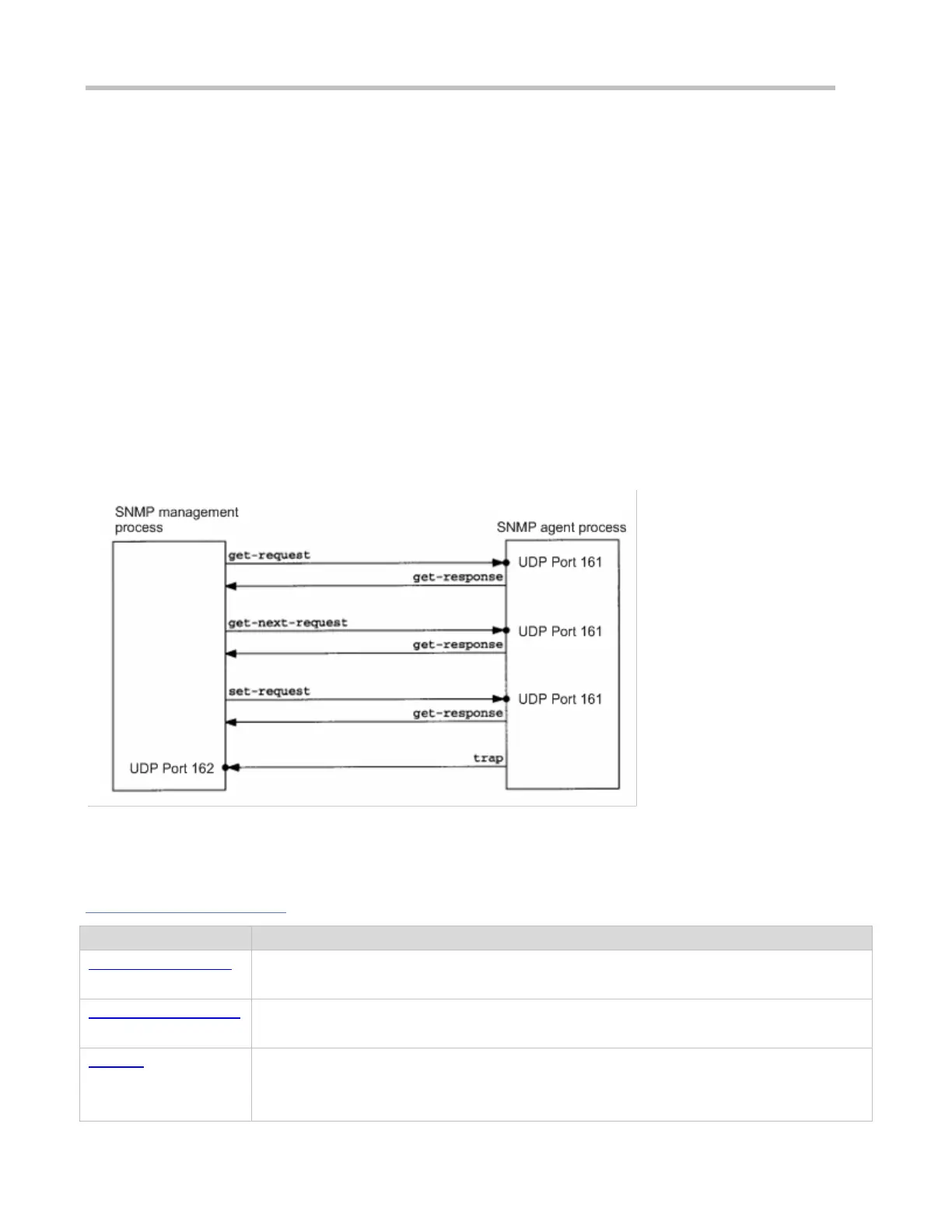Configuration Guide Configuring SNMP
Operation Types
Six operation types are defined for information exchange between the NMS and the agent based on SNMP:
Get-request: The NMS extracts one or more parameter values from the agent.
Get-next-request: The NMS extracts the parameter value next to one or more parameters from the agent.
Get-bulk: The NMS extracts a batch of parameter values from the agent.
Set-request: The NMS sets one or more parameter values of the agent.
Get-response: The agent returns one or more parameter values, which are the operations in response to the three
operations performed by the agent on the NMS.
Trap: The agent actively sends a message to notify the NMS of something that happens.
The first four packets are sent by the NMS to the agent and the last two packets are sent by the agent to the NMS. (Note:
SNMPv1 does not support the Get-bulk operation.) Figure 5-4 describes the operations.
Figure 5-4 SNMP Packet Types
The three operations performed by the NMS on the agent and the response operations of the agent are based on UDP port
161. The trap operation performed by the agent is based on UDP port 162.
Overview
The SNMP agent is configured on network devices to implement basic functions such as
information query for network nodes, network configuration, fault locating, and capacity planning.
SNMPv1 and SNMPv2C adopt the community-based security architecture, including
authentication name and access permission.
SNMPv3 redefines the SNMP architecture, namely, it enhances security functions, including the
security model based on users and access control model based on views. The SNMPv3
architecture already includes all functions of SNMPv1 and SNMPv2C.
